Most info in the internet about long term wilderness survival is pathetic; most of it is written by people that have not spent more than a few weeks in the wilderness. Do you really expect to survive and thrive solo for months or a year with just what you carry in your backpack? Think again. I know it is not impossible; our ancestors surpassed similar challenges. But it requires having the proper location, team, strategy, gear, skills, and knowledge.
You can’t just expect to buy a Bug Out Bag online, and be ready to live off the land. If your long term wilderness bug out plan is not part of a well thought strategy; bugging out into the woods is crazy.
This post will go back to basics in terms of what a long term wilderness strategy should have.
Bugging out should never be your first option; it is probably the worst option available to the vast majority of people.
Proper Planning
Only a minuscule fraction of people could successfully thrive in a long term wilderness scenario. There must be hundreds of posts about wilderness bug out bags; I’m not an expert, but my outdoor experience including six months living in the wilderness allows me to have a realistic perspective.
Bugging out into the woods is not a new idea. Humans have always escaped into remote places to find refuge. Unfortunately, there are less and less remote, wild places today. Biodiversity and wildlife abundance is in decline. There must be food in your area or you will starve.
Long gone are the days when millions of Bison roamed the Great Plains. Even though 99% of our human ancestors were hunter gatherers, we must realize that our land is very different than their land. Deforestation, infrastructure, agriculture and population expansion have almost wiped out intact wilderness areas. If you want to bug out into the wild you must have a wilderness to go to.
Location
Your location will dictate if it is possible to live off the land, and how. I can’t stress the importance of a location with dependable abundant food. You want to go near a large body of water; a coastal area near a river delta would be the best of both worlds.
Fish is one of the best and most reliable wild food sources; you should be able to catch them in your area. Your location should be in a remote wilderness area far from roads to avoid competition, and avoid attracting unwanted attention. The Global Forest Watch Map shows forested areas that are far away from roads.
You can quickly realize that there are almost no large areas of intact forest in the United States except for Alaska. This means you can quickly access any forest in the white areas with just a 4×4. If you want to be in a remote wilderness area far away from a 4×4 road Canada or Alaska are your best bet.
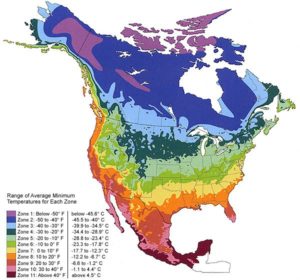
The location will dictate your climate including how much rain, snow and cold you should expect.
Researching which animals live in that area is also a good idea. Using wolf range maps in conjunction with ungulate and carnivore mammal biodiversity maps you can get a better idea of where to go if you want to be able to hunt big game in addition to small game.
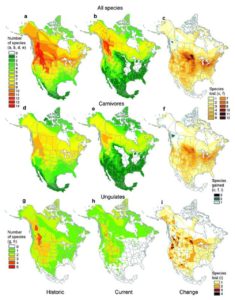
Another good idea is to research the distribution areas of important wild edibles, for example you can see the distribution of wild rice below.
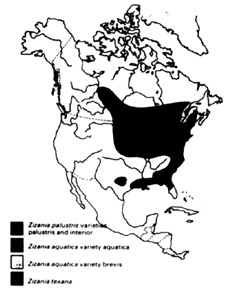
Team
We humans are social animals. We are meant to live in tribes, and can’t survive alone for long. Besides being solo in a remote wilderness area for long periods of time is asking for trouble. The main reason people get away with it now is because of the ability to use satellite communications to get rescued.
Your team must be motivated and have the mental resiliency to improvise and adapt to a foraging lifestyle. In my post 6 Strategies That Will Boost Your Attitude in a Survival Scenario I explain some strategies to that can help in a long term survival scenario.
According to many studies of hunter gatherer tribes, the magic number, or average number of members in a hunter-gatherer tribe is 25. Nevertheless, not all members of a tribe actually hunt and gather; this number includes children and elders. In a long term wilderness survival scenario it would be ideal to have a group of around 7 to 8 people (The Lifeways of Hunter-Gatherers: The Foraging Spectrum).
If your group is small you can’t do many things at the same time. For instance, a small group can’t fish, hunt, trap, cut and dehydrate meat at the same time. Having extra hands helps a lot, but having extra mouths means you need more resources. The magic number that offers a good compromise is around 7-8. Based in common sense and past hunter-gatherer societies, a mixed-sex group would fare better.
Check my article optimal size of a survival group for more info.
Strategy
Your plan most be based on a survival strategy that imitates the strategy of past hunter gatherers that lived in your area. If they relied in things that are no longer there (for instance massive salmon spawnings) you most find out what other hunter gatherer groups did to survive in conditions similar to yours.
One of the premises of long term wilderness survival is that it can be done because it was done by our ancestors. This means that if we want to live off the land we must do it using their same strategies (strategies, not gear).
Gathering food is the ultimate purpose of the plan. It has to be based on the available resources and their seasons. Seasons are cyclical, meaning there are better and worse times for everything. Good timing is super important to ensure you are going with nature rather than against. In addition, timing is essential to gathering any type of wild food.
Skills and Knowledge
Having skills and knowledge in the following topics would be an incredible advantage:
Backpacking, canoeing, navigation, trapping, primitive traps, tracking, animal behaviour, wild edibles, primitive technology, basketry, knots, bushcraft, fire lighting, friction fires, shelter building, sewing, tanning hides, making cordage, net making, hunting, fishing, weather, wilderness first aid, herbal medicine, cooking, handling a knife or an axe etc.
Gear
People tend to fixate on equipment for long term wilderness survival more than the other aspects. Although it is not the most important considerations it is still important to be appropriately equipped to your specific bio region and circumstances. You can use another person’s list as an inspiration but should still tailor it to your scenario.
The main purpose of your equipment is to provide you with shelter, water and food, and it does that by fulfilling the following needs: transport, load carrying, navigation, shelter, clothing, fire, food, cooking, hunting, trapping, fishing, wild edibles, water, first aid, tools and winter shelter/clothing etc.
You should be experienced with the gear you will take and must keep in mind that durability, reliability, and simplicity are of utmost importance when choosing your equipment. Another important point is to consider the effects of food deprivation. When thinking about gear, keep in mind that you will be colder when your body looses fat and lowers its metabolism in addition to having less energy and feeling weak (you want to avoid this, but it probably will happen at some point).

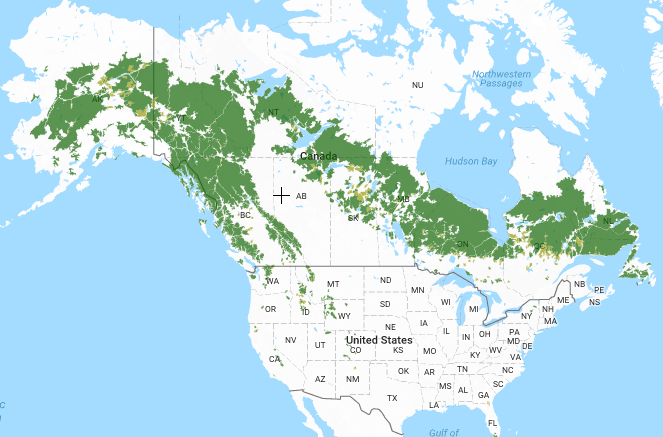
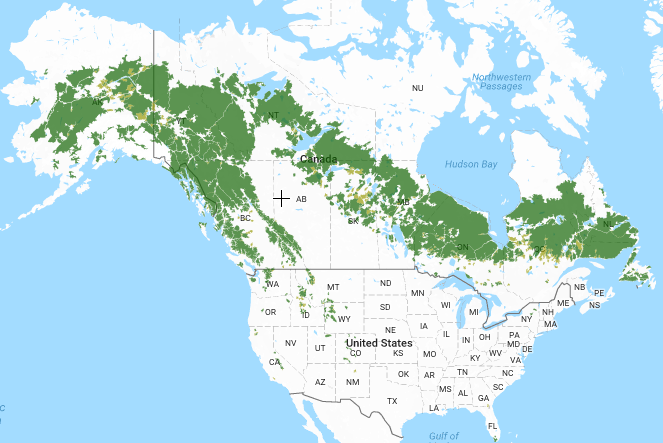
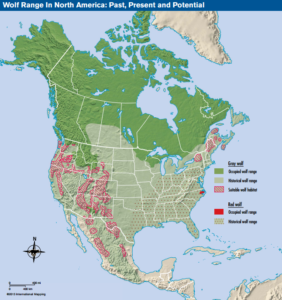
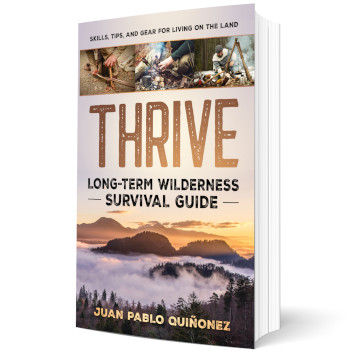
Finally a survival article that actually gives some solid advise. You can have all the gear in the world but if you don’t know what you are doing you will fail. However I don’t believe your forest map or precipitation map are quite accurate. There is alot of rain in the southeast particularly at higher elevations and many areas in the southeast may have 4×4 accessible roads (logging trails) there are some very wild areas particularly near larger rivers, streams and floodplains. You don’t have to go to Alaska to survive in the wild.